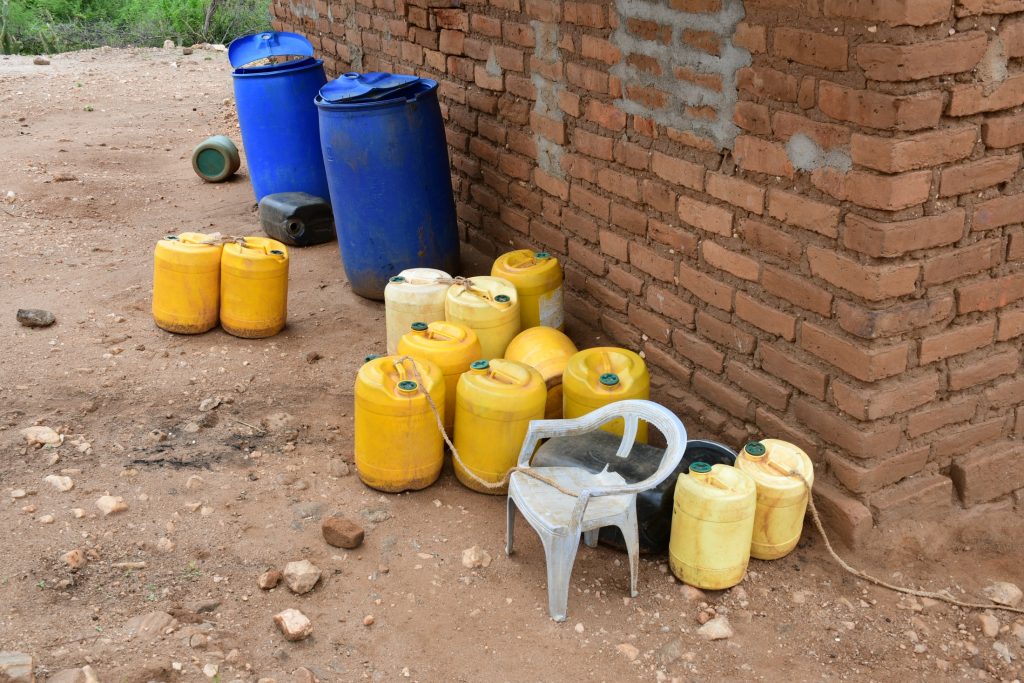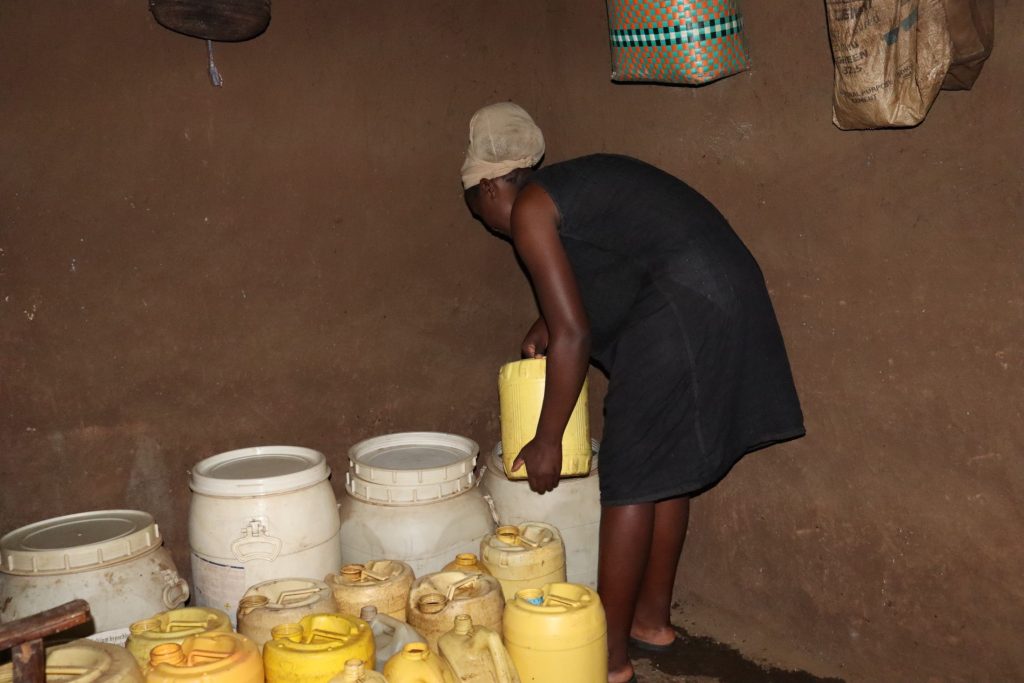Yellow Jerrycans: A Symbol of the Water Crisis
Yellow jerrycans are everywhere here in Kenya. When you walk in the streets or visit shops, you will always come across them. They are everywhere because when people don’t have piped water in their homes, they need something to store it in. Have you ever imagined growing up seeing yellow jerrycans at home as water storage containers?

Yellow jerry cans have been part of us and our families for decades in Kenya. Growing up, I saw our mothers using yellow jerrycans to fetch and store water in our homes. I have carried many trips of water from the river and back home using yellow jerrycans for years. During that time, we enjoyed carrying water on our heads because it was normal and our way of life.
The jerrycan design was developed by the German army in World War II. German engineers invented the cans for armed forces to carry fuel and other fluids. The can was originally called a Wehrmatchkanister (or “defense force canister”). Originally, they were made of metal, but today’s version, in Africa, is made of their trademark yellow plastic.

Years later, people repurposed the cans for water storage in areas facing water scarcity. That is how the yellow jerrycan became a symbol of the water crisis and the challenges of accessing clean water.
Cooking oil companies here in Kenya and across Africa produce different types of cooking oil packaged in plastic containers. The containers help many community members because, after using the cooking oil, they can then reuse its container for fetching and storing water. And besides that, the container is also cheap and affordable.
Water is the source of life, yet for millions of people across sub-Saharan Africa, it remains a scarce and precious commodity. Water scarcity forces people to buy yellow jerrycans for fetching water and as water storage containers.

Here in Western Kenya, many communities are still struggling to gain access to clean water. Some schools and dispensaries still depend on rainwater. And their most common water storage method is jerrycans. Because of this, the yellow jerrycans are the most important item in our homes. Any home here in Africa owns several containers of yellow jerrycans, including mine.
The last three months have been tough in my house because we have been receiving water only twice a week due to rationing. This forces me to ensure that I maximize the two days’ supply by filling all my yellow jerrycans with water that will sustain my family and me throughout the remaining days. Water is key in every household and institution. It is better not to have electricity than water, because staying hydrated and having enough water defines humanity.

Working with The Water Project for the past eight years has made me realize that using yellow jerrycans to fetch water is a sign of the water crisis. I think when someone is born in a community and nurtured according to the values, beliefs, and customs of that community, they believe and trust what they see and what they have been practicing for years. That is why I didn’t see any fault in carrying yellow jerrycans with water every day. Although it was tedious and tiresome, we did it because we didn’t have any options at that time.
Right now, when I go back home to our village to visit my mother, I don’t think I will be able to walk to the river and carry water. I now view things differently. My desire is to see my mother one day having water at home and not carrying water from the river every day. The partnership between The Water Project and the government of Kenya is creating a lot of impact in Kenya. For many years to come, many homes, schools, and health centers will have access to clean and safe water closer to them, including my home village, where my mother is still fetching water from the river.
According to the United Nations’ Sustainable Development Goal 6, access to water, sanitation, and hygiene is a human right. But when we visit many schools and communities here in Kenya, they are still struggling to get access to clean and safe water. I am so thankful that The Water Project makes dreams come true for those schools and communities. We protect springs, drill boreholes, and provide sanitation facilities to communities, schools, and health centers that are in need. Not just in need of water, but of clean and safe water.
It is my prayer and hope that one day, yellow jerrycans will be a thing of the past, and people will be getting water right at their homes, schools, and health centers. But I know that The Water Project will not do this alone. It is upon all of us to put our resources together and help mothers and children get access to clean and safe water. Let’s come together to support The Water Project and do away with yellow jerrycans in Africa.
Tweet